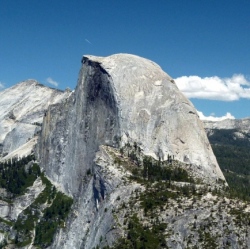
Scientists in California are testing sponges made with the key ingredient of baking soda as a way of capturing carbon emissions. The researchers say that soda is more effective than current methods and less damaging to the environment. The team have already successfully trialled microcapsules filled with the substance.
They believe that the baking soda approach could be 40% cheaper than existing technology. Carbon capture and storage (CCS) is believed by many scientists and politicians to be a critical element in global attempts to avoid dangerous levels of climate change caused by CO2 emissions.
The burning of coal, gas and oil for energy production remains the single biggest source of the gas. For years researchers have been working to build experimental technology that would capture CO2 from chimneys and flue pipes before it gets into the atmosphere. The gas would then be buried permanently, deep underground.
Indeed the promises made in Paris Climate Agreement to limit global temperatures to "well below" 2 degrees will need significant deployment of CCS.
"Nobody can see us keeping temperatures increases below 1.5 degrees without these technologies," said Dr Oliver Geden at the German Institute for International and Security Affairs.
"Yet there hasn’t been any debate about this technology and it doesn’t exist at scale."
The equipment and chemicals that need to be built on to a power station to extract the CO2 are known to be expensive and cumbersome. While governments and industry both recognise the benefits of such a system, they have been unwilling to put up the large amounts of cash needed.
Late last year the UK government pulled the plug on a £1bn competition to build a scaled-up version of the technology. Scientists are now looking at other materials to see if they can achieve the same impact but at a lower cost.
At the Lawrence Livermore National Laboratory (LLNL) in California, they believe that baking soda could be a key ingredient for curbing the carbon.
They’ve created microcapsules that have a liquid solution of sodium carbonate (also known as soda ash) at their core, surrounded by a polymer shell that allows CO2 to flow through.
The tiny blue balls sit in an aqueous solution which prevents them from sticking together. When they come in contact with CO2 they change colour to a yellowish brown. Exposure of sodium carbonate to CO2 and water creates sodium bicarbonate, otherwise known as baking soda.
